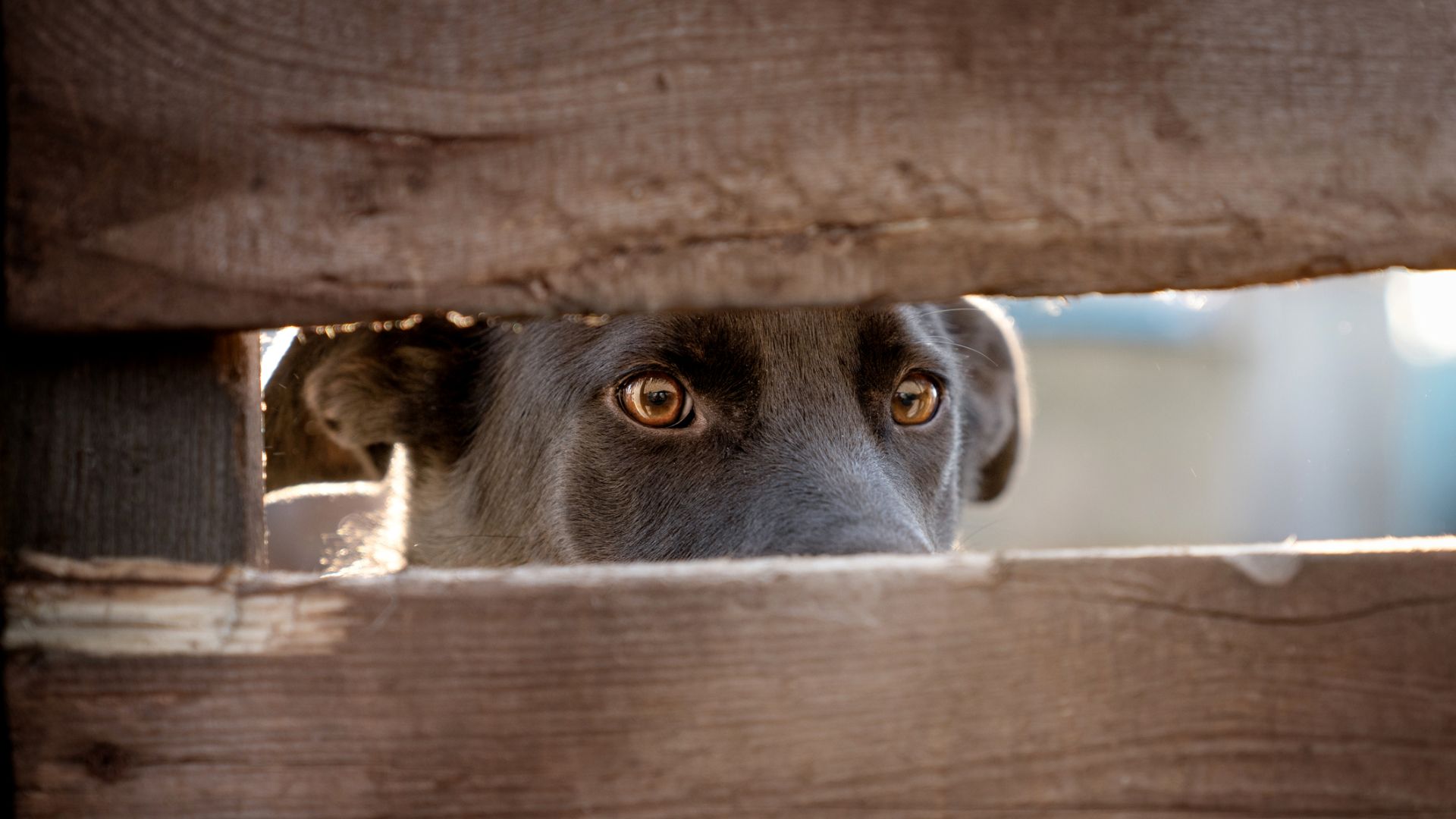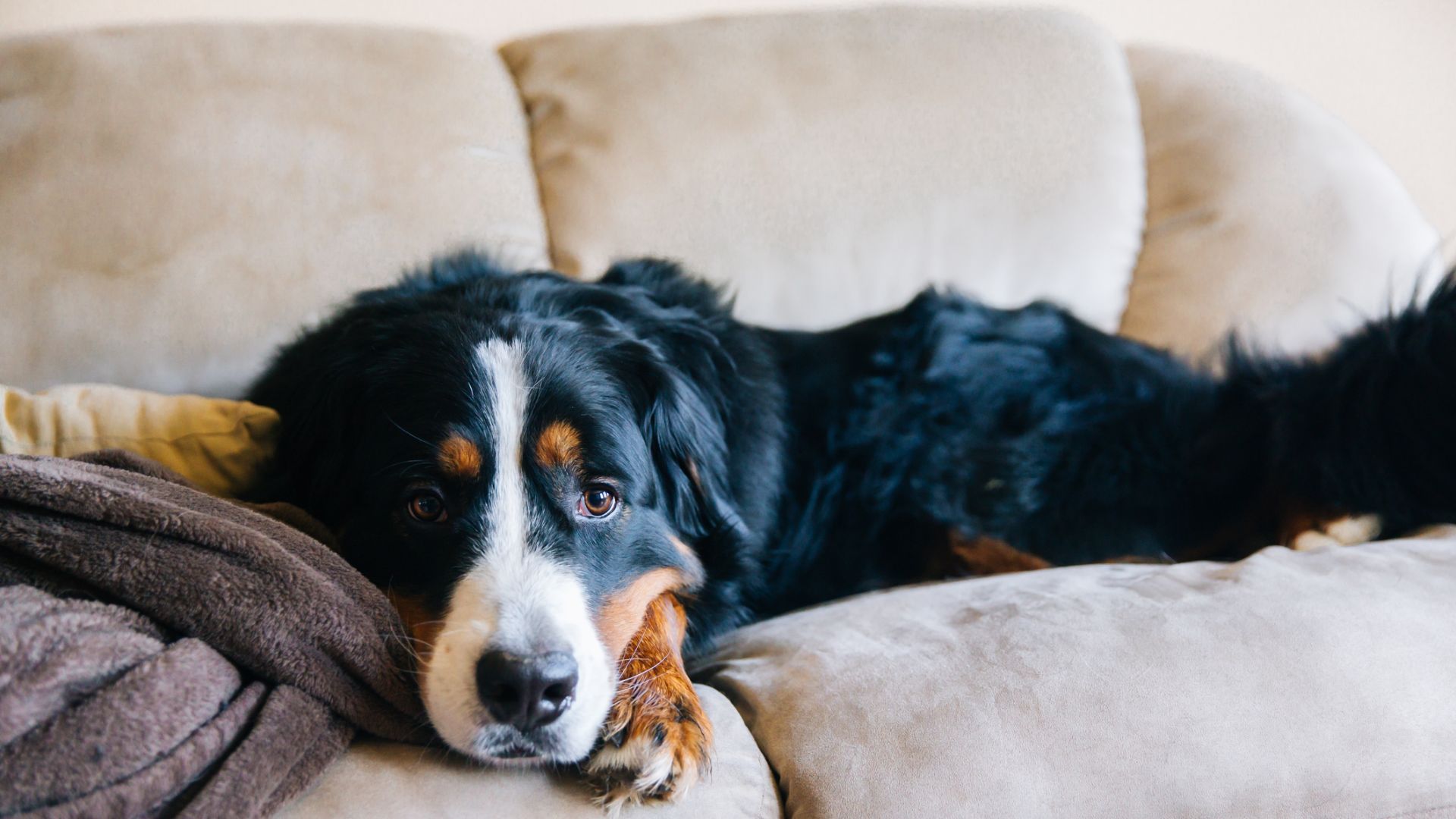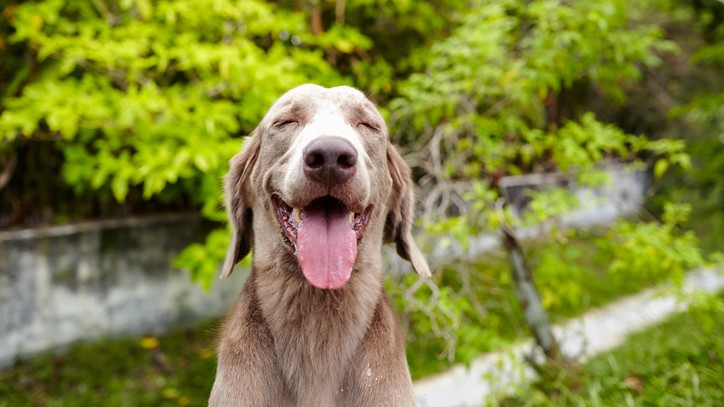
Poppy, a large Weimaraner cross, was a high-energy dog with reactivity issues. Managing her excitability was challenging. Before I trained as a dog behaviorist, I believed that giving Poppy a lot of exercise would give her the energy release to calm her.
At the start of our walks, we crossed a 15-acre field with two giant hills. I'd let Poppy off the lead at the top of one hill, and in a second, she'd race to the end of the field until she was a black dot on the horizon. I used to give her a five-minute free pass because I knew I'd have no chance of a recall if I didn't let her get the energy out of her system.
I accepted Poppy's excitability as part of her nature. Still, I didn't know how her heightened state was creating the release of cortisol, which further added to her hyperactivity and impulsive behavior. After that, if we met anyone on our walk, her reactivity issues kicked in, and once again, I had to deal with Poppy's emotional outbursts. Here, I share what cortisol can do to your dog's behavior and explain how I learned how to calm a reactive dog.
What is cortisol, and how does it affect dogs?
Cortisol is a primary stress hormone that regulates body weight, fights infections, and activates the sympathetic nervous system, creating the "fight or flight" response. When a dog feels overwhelmed or overstimulated, cortisol levels may stay elevated, and that can cause significant problems.
Ann Stohlman, V.M.D., a veterinarian at FDA's Center for Veterinary Medicine, said, "Cortisol is one of the body's natural steroids." She states that a normal amount of cortisol helps the body adapt during stress. However, a dog with too much cortisol may weaken its immune system, leaving it vulnerable to infections or diseases like Cushing's.

There's a school of thought that cortisol can stay in a dog's body for up to 72 hours, although some experts in the IAABC journal contest these statistics, and there appears to be little documented scientific evidence that cortisol stacks over time.
I can only speak from my experience of Poppy and working with other impulsive, reactive dogs and how their stress levels and behavior improved when I implemented calming protocols.
We know the long-term effects of elevated stress on people, so minimizing stress triggers in our dogs can positively impact their emotional and physical well-being.
How I helped my dog become less stressed
Before I begin, I must say that some protocols could be tricky for the whole family to implement because they may seem counterintuitive to how we usually react around our dogs. Understanding dog body language is also important here so you know how to spot the signs of stress in your dog.
We love our dogs, and it's fantastic when they get excited to be with us. However, with a little daily commitment, your dog can experience a reduction in stress hormones by learning how to manage their behavior.
Firstly, let's discover what kind of things could be triggering a cortisol response in your dog.
What causes a cortisol rise in dogs?
For example, playing fetch with a ball can be too stimulating for a dog if they become addicted to chasing a ball (for more on this, discover why our writer thinks you're playing fetch with your dog all wrong and what simple changes to make).
It wasn't until I trained as a dog behaviorist that I understood how giving Poppy physical exercise wasn't helping to change her excitable behavior. So, here's what I did:
- I would not let Poppy off the lead until she was calm. She would not be released if she whined, barked, pulled, or lunged.
- I gave her jobs to do whilst out on a walk. For instance, I sometimes hid Poppy's favorite toy and asked her to find it.
- I did occasional training exercises on a walk, such as asking Poppy to do a distance down.
- I asked her to sit before I opened the back door or garden gate. If she lunged forward, I would shut the door or gate, and we would start again.
- I ignored her when I returned home unless she was calm. At that point, I gave her my attention.
- Enrichment games helped, like hunting the treats in the garden, finding toys in the house, or anything where she had to use her exceptional sense of smell.
- I did canicross (running with dogs) as that creates the bond of moving together.
- Poppy loved swimming. Thirty minutes at the doggy hydrotherapy session would calm her for an entire day.

Exciting car rides
Does your dog go crazy when he knows he's going for a car ride? Or does he bark, whine, drool or show restless behavior in the car?
When you reach your destination, does your dog fly out of the car without control? If so, the following exercises might help:
- Practice putting your dog in and out of the car without traveling. Let him sit in the car until he calms. When he relaxes, offer him a treat and take him back inside.
- Teach your dog to wait before he jumps into the car and only on your command.
- Have a crate in the car and cover it with a blanket when the vehicle is moving.
- Teach your dog to wait before he jumps out of the car.
- Add a food puzzle game or safe chew in the crate.
The objective is to make the car experience calm and pleasant for your dog and you. With the element of control, it teaches your dog to manage their emotions better.
Too much playtime
It might seem counterintuitive, but too much playtime can be stressful. If you take your dog to the dog park daily, he begins anticipating the "payoff" of playing with the other dogs. His anticipatory excitement – and subsequent increased cortisol - could start as soon as you leave the house.
Sometimes, even just being around other dogs can be over-stimulating.
The same goes for playtime with children, who are naturally high-energy and love playing with a dog.
Use enrichment games such as food puzzles and scent games to stimulate his mind without stress.
Many dogs enjoy agility training and canicross. Instead of allowing your dog to run wild, engage your dog's mind instead of, or as well as, his body.
Even short training sessions can be tiring for a dog.

We all want our dogs to live a long, happy, and stress-free life. Encouraging our dogs to become calm doesn't change their personality. Indeed, it means they get to do more with us because they are relaxed and well-behaved. It didn't take Poppy long to work out how to get what she wanted quicker by being calm, and the bonus was that it deepened our bond.
Looking for more like this? Check out these helpful ways to get your dog to come back to you on off leash walks.







